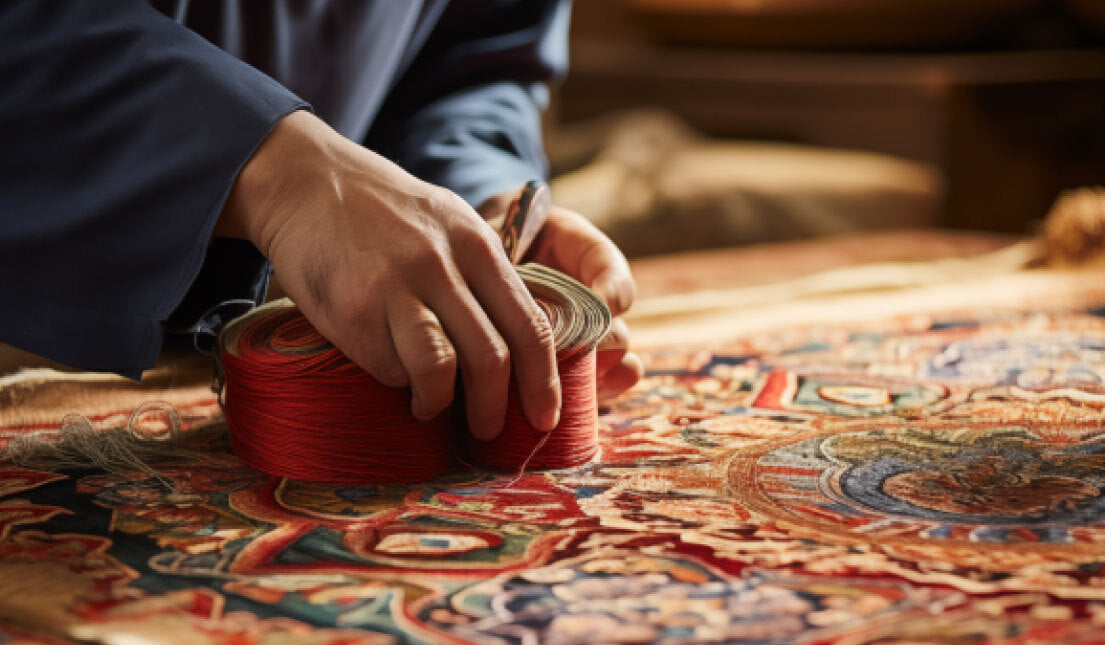Behind the Scenes: The Art of Crafting Hand-Knotted Oriental Rugs

The creation of a hand-knotted Oriental rug is an art form steeped in tradition and skill, passed down through generations. These rugs are not merely decorative items but are embodiments of cultural heritage and craftsmanship. This article takes you behind the scenes to explore the intricate process and artistry involved in creating hand-knotted Oriental rugs.
1. The Beginnings: Selecting Materials
The journey of a hand-knotted rug begins with the selection of materials. Wool, silk, and sometimes cotton are commonly used. The choice of material influences not just the look and feel of the rug but also its durability and value. Wool is prized for its durability and warmth, silk for its sheen and fine detailing, and cotton for its strength and stability.
2. Dyeing: The Color of Tradition
The dyeing process is crucial in defining the rug's aesthetic appeal. Traditional rugs often use natural dyes derived from plants, minerals, and insects, offering a rich, muted palette that ages gracefully. Modern rugs may use synthetic dyes to achieve a broader color spectrum. The dyeing process requires precision and skill to ensure colorfastness and uniformity.
3. Designing: Patterns with Meaning
Each rug tells a story through its pattern. Designs are often deeply rooted in the rug-making region's culture, with motifs symbolizing good luck, health, and prosperity. The rug's design is first sketched on paper. This blueprint, known as a cartoon, guides the weavers in their intricate work.|
4. Weaving: The Heart of the Process
Weaving is the most time-consuming part of the process. Artisans tie individual knots to the warp (vertical threads) of the rug. The type of knot and the knot density define the rug's quality and detail. This process can take months or even years, depending on the rug's size and complexity.
5. Finishing Touches: Trimming and Washing
Once the weaving is complete, the rug undergoes meticulous finishing processes. The surface is trimmed to ensure an even pile. The rug is then washed, sometimes multiple times, to remove any loose fibers and to enhance its texture and color. Finally, it's left to dry in the open air, a process that can affect its final hue.
6. The Final Product: A Story in Every Thread
The completed hand-knotted rug is not just a piece of home decor; it is a testament to the weaver's skill and the rich artistic heritage of its place of origin. Each rug carries within its threads a story of cultural identity, artistic dedication, and meticulous craftsmanship.
Conclusion:
Behind every hand-knotted Oriental rug is a narrative of tradition, skill, and artistry. These rugs are not just created but are born from a laborious, loving process that spans cultures and generations. Understanding the process behind their creation enhances the appreciation of their beauty and the cultural stories they tell.
